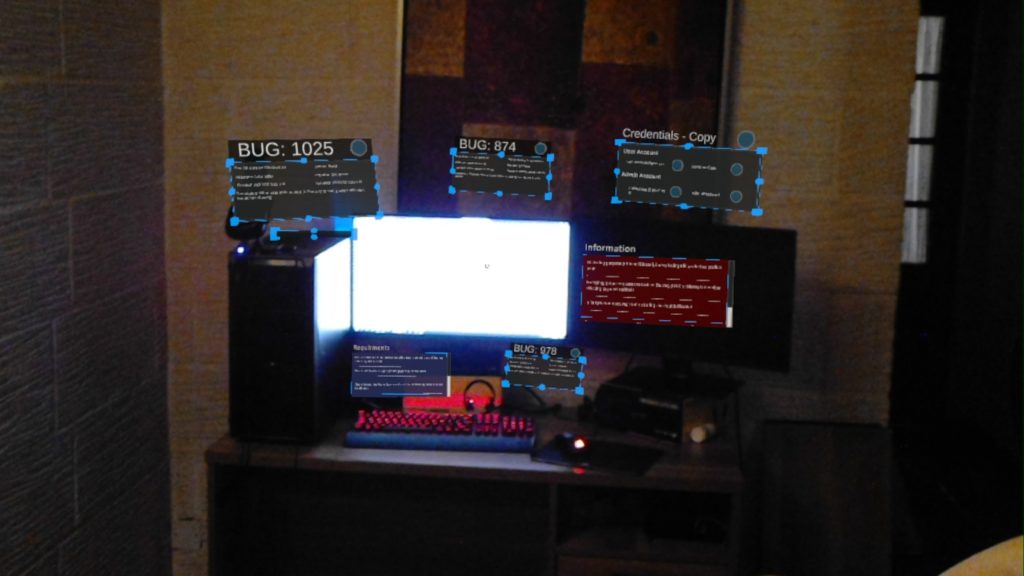Software testing is the predominant methodology used by the software development industry to build confidence in a software product prior to release. The ever-increasing complexity and volatility of requirements makes the task of software testers considerably difficult. This project builds upon previous work to investigate how mixed- reality design patterns, along with context-relevant just-in-time information, could be used to improve the performance of software testers.
Following an extensive review of design patterns related to mixed-reality systems, a subset of these was selected and incorporated into the design and implementation of a prototype utilising the Microsoft Hololens headset. To gain insight into the extent of the effect of this process on the performance of software testers, a qualitative study based on thematic analysis was undertaken. For the said study, experts from both fields (i.e. testing and mixed reality) participated in a series of review sessions using the prototype, showcasing how the approach could be used to enable testers to organise a virtual workspace in mixed reality, and how this workspace would then show just-in-time information in relation to whatever the tester was doing at any point in time. Subsequently, the participants were interviewed on how such an application could potentially improve and affect the workload of testers, as well as impact the industry as a whole.
Five key themes emerged from the interviews conducted with software-testing specialists, namely: ’Aiding the tester’, ‘Better understanding of data’, ‘Impact on the software industry’, ‘Pricing and integration’, and ‘Potential software features’. From the interviews with mixed-reality experts, the following three themes emerged: ‘Interaction’, ‘Additional guidance’, and ‘Developers adapt’.

The findings extracted from the interviews with the software testers highlighted how such a technology could not only improve a tester’s workflow, but also have a positive impact on the industry at large. However, it was also noted that the current high pricing and integration costs hindered the progress of the technology in question. The findings resulting from feedback obtained from mixed-reality specialists underlined the importance of interaction between mixed-reality applications towards improving the experience of both new and advanced users.

Student: Matthew Cachia
Course: B.Sc. IT (Hons.) Software Development
Supervisor: Dr. Chris Porter
Co-supervisor: Dr. Mark Micallef
